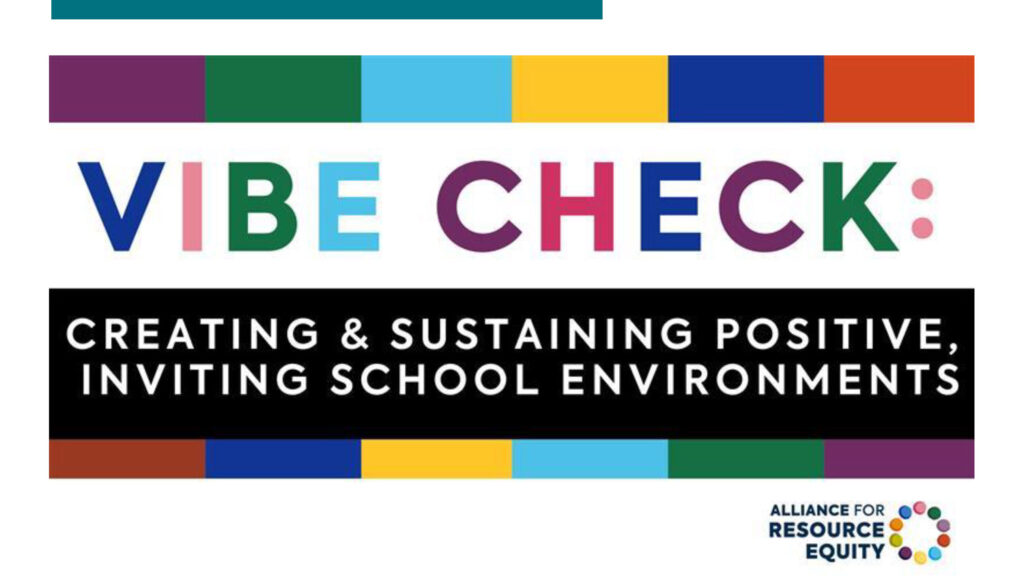For nearly three decades, The Education Trust has worked alongside community organizers, grassroots organizations, and advocates to transform schools into places that serve all students well, especially those who are historically marginalized. In that time, we’ve noticed that advocates are routinely missing from conversations and plans made by district leaders and other decision-makers when it comes to the distribution and use of resources in their communities’ schools.
Meanwhile, in partnering with district, school, and state leaders, Education Resource Strategies (ERS) has repeatedly witnessed leaders stymied by a lack of support from their communities borne of authentic engagement from the outset when attempting to make changes to how resources are organized to improve excellence and equity.
WHAT IS EDUCATION RESOURCE EQUITY?
Noticing this gap across our nation, Ed Trust and ERS began to discuss solutions. We wondered if there was a way to unite advocates and district leaders in the work to better define education resource equity, which we define as ensuring that schools have what they need — from funding to teacher quality and diversity to a positive school climate to rigorous coursework — to unlock every child’s power to live a life of their choosing regardless of race, family income, disability, or language spoken at home. It’s about providing students with the right combination of supports based on their needs — which are different for different groups of students at different moments. But ultimately, it’s about overcoming the barriers that stall the academic progress of too many deserving students. We decided to team up to form the Alliance for Resource Equity to equip state and district leaders, educators, families, and community advocates with a common language, tools, and action plans to combat inequities in education.
To understand how education resource equity can unlock opportunities for all students, especially for students of color and students with higher needs — including students from low-income backgrounds, students with disabilities, English learners, and students experiencing homelessness, foster care, or the juvenile justice system — our Alliance for Resource Equity team has spent the last 18 months listening to parents and teachers in a diverse set of school districts, reviewing research, and exploring the insights we’ve gained during our own deep work with school systems and advocates across the country during the past 15 years. The result is a set of tools to help practitioners and advocates work together to change the conversation from “how much” money is spent at a school to also include “how well” a school uses its resources.
Having completed this research, we are even more convinced that schools and systems can meet students’ different needs when they deeply understand those needs and mobilize the right combination of resources in response. The right combination of resources can lead to the unlocking of every students’ potential and pave the way for limitless opportunities to succeed.
We are launching the Alliance for Resource Equity with a series of resources to help unite advocates and education leaders in unlocking excellence for every student. First, our website features a paper called The Education Combination outlining 10 dimensions that comprise education resource equity based on student experiences, along with a resource equity diagnostic to help people identify the most urgent equity needs in their school communities.
1. School Funding
2. Teacher Quality and Diversity
3. School Leadership Quality and Diversity
4. Empowering and Rigorous Content
5. Instructional Time and Attention
6. Student Supports and Intervention
7. Positive and Inviting School Climate
8. High Quality Early Learning
9. Learning Ready Facilities
10. Diverse Classrooms and Schools
In addition, we are releasing “The Advocate’s Guide” to help advocates identify the immediate steps they can take to begin this work in their school districts and a sample meeting agenda that district leaders and community members can use to complete the resource equity diagnostic.
We’re excited about the possibilities and have already seen promising results in places where we’ve introduced this approach and offered deep technical assistance. One example is Oklahoma City, Oklahoma, where district leaders, school board members, teachers, school leaders, community advocates, and parents used the 10 dimensions and the resource equity diagnostic to identify areas for growth as they collaborate to reduce opportunity gaps. Said one participant: “I am ready to be a part of a solution that equips educators, students, and families with resources and knowledge to knock down barriers and/or work through and around them.”
It’s that kind of partnership that moves the needle forward. It is our sincere hope that communities across the country will take the resources we’ve designed to assist in this work to make sure that every student, regardless of race or income, has the support they need to unlock their potential and receive an excellent education.
To learn about all 10 dimensions of education resource equity, and to join us in working toward this vision of finding the right combination of resources to unlock every child’s potential, visit educationresourceequity.org







